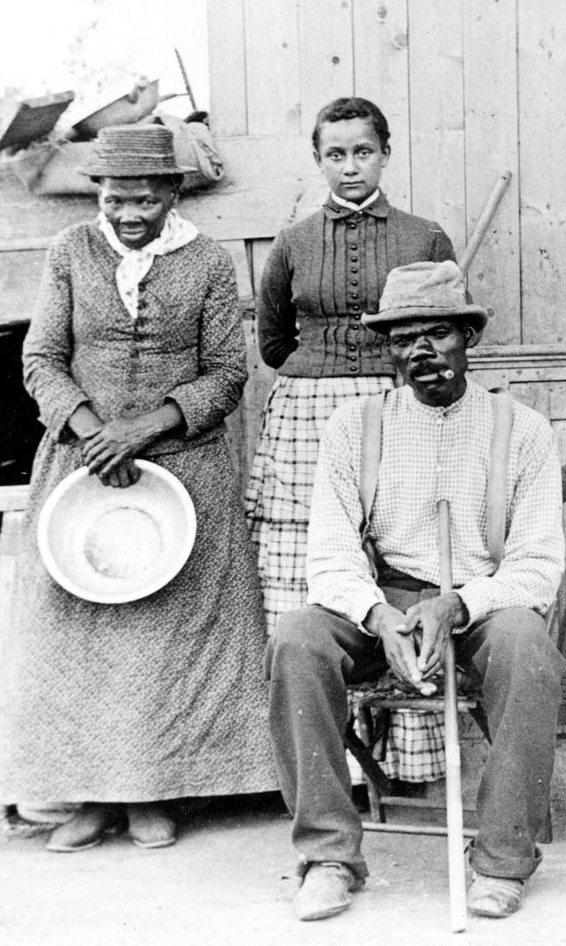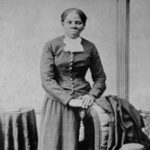Harriet Tubman was an American abolitionist and political activist. Tubman was an inspirational figure in American history and is referred to as one of the most “heroic and significant figures” in United States history.
She is best known for her work on the Underground Railroad, helping to lead hundreds of enslaved people to freedom. Though her struggles were extraordinary and her courage and strength unrivalled, the legacy of her work lives on today. But there is so much more to her story than that.
Your Kid Professors Youtube episode of Harriet Tubman
Here are fifteen amazing facts about Harriet Tubman that you probably didn’t know!
1. Harriet Tubman was born into slavery in Maryland in 1822.
Tubman was born Araminta Ross in 1822 in Dorchester County, Maryland. At seven, she was put to work in the fields and suffered so much abuse that she decided to escape.
2. Tubman escaped slavery in 1849 and made her way to Pennsylvania.
In 1849, she escaped to Philadelphia, and after finding shelter, she decided to return to Maryland and help others.
3. Tubman made 19 trips back to the South to help lead slaves to freedom.
In 1850-1860, Tubman started working on the Underground Railroad, helping slaves escape. It is estimated that Tubman helped over 300 slaves to escape.
4. Tubman was nicknamed “Moses.”
Because of her labor on the Underground Railroad, Tubman earned the moniker “Moses.” She led her people to independence as a result of her efforts. As a conductor, she organized slave escape routes and led other fugitives to the network of paths that led them to Canada.
5. Tubman was a Union spy during the Civil War.
She served as a nurse at a military base and as a scout for Colonel Thomas Wentworth Higginson, helping recruit African-American troops. Before receiving instructions to set up a spy ring, Tubman spent months working as a laundress, running a washhouse, and acting as a nurse. As the head of the Underground Railroad, Tubman had demonstrated her unbeatable skill at gathering secret information, forming allies, and avoiding capture. Taking on her new responsibilities, Tubman became the commander of a covert military operation.
Harriet Tubman was much more than a “spy” for the Union Army; she oversaw an entire spy network! Harriet led three Union gunboats and approximately 150 Black Union troops up South Carolina’s Combahee River inland. She led them to several warehouses containing Confederate rice and cotton.
6. After the war, Tubman devoted her life to working for the rights of African Americans and women.
Moreover, Tubman was an active abolitionist, advocating for African-American rights and as a speaker at churches and rallies. In 1896, Tubman founded the National Association of Colored Women and served as its leader until it merged into what became known as the National Association for the Advancement of Colored People (NAACP). Later, in 1913, she helped found the National Negro Congress as a rights organization for African-American women.
7. After the war, Tubman devoted her life to working for the rights of African Americans and women.
Moreover, Tubman was an active abolitionist, advocating for African-American rights and as a speaker at churches and rallies. In 1896, Tubman founded the National Association of Colored Women and served as its leader until it merged into what became known as the National Association for the Advancement of Colored People (NAACP). Later, in 1913, she helped found the National Negro Congress as a rights organization for African-American women.
8. Tubman underwent brain surgery but refused anesthesia.
Tubman underwent brain surgery in 1898 but opted out of being sedated.
An overseer hit Tubman in the head with a heavyweight when she was a child after she refused to restrain a field hand who had left his plantation without permission. She was severely traumatized by the event and suffered from headaches and seizures for the rest of her life. By the late 1890s, her inability to sleep had been hampered by the pain in her head, and she found a doctor in Boston willing to operate on her brain. Instead of being sedated while the doctor cut open her skull and performed the surgery, she chose to bite on a bullet, as she had seen soldiers do during the Civil War.
While Harriet was out on a mission, she didn’t see her husband, John, for two years. During that time, he also married another woman, Nelsen Davis, a former Union soldier 20 years her junior.
9. She had nine kids
In 1844, Tubman married John Tubman, a free black man. She adopted his surname and renamed herself Harriet.
According to documents, they married in 1808 and had nine children: Linah, Mariah, Soph, Robert, Harriet (minty), Rachel, Henry, and Moses.

10. Her husband married another woman while she was on a mission.
While Harriet was out on a mission, she didn’t see her husband, John, for two years. During that time, he also married another woman, Nelsen Davis, a former Union soldier 20 years her junior.
11. She collaborated with many prominent abolitionists, including John Brown.
Tubman fled to Philadelphia before relocating to Ontario after the Fugitive Slave Act became law in the United States in 1850. Brown admired her knowledge and dubbed her “General Tubman.” Tubman assisted John Brown in planning his 1859 raid on a Harpers Ferry arsenal, one of the significant events that precipitated the Civil War. Still, he was quickly apprehended by Marines and sentenced to death. Many men who joined his raid, including two sons, were killed.
12. Harriet Tubman used “Wade in the Water” to help slaves escape
13. Tubman died in 1913 at the age of 91.
Harriet Tubman died of pneumonia on March 10, 1913, in Auburn, New York. While her exact birth date is unknown, it is believed she lived into her early 90s.
14. She has two National Parks named after her.
Harriet Tubman Underground Railroad National Historical Park in Church Creek, MD and Harriet Tubman National Historical Park in Auburn, NY

15. Tubman was announced as the new face of the $20 bill.
In 2016, It was announced that Tubman would be the face of the new $20 bill. Late in President Barack Obama’s second term, it was announced that a portrait of Harriet Tubman would replace Andrew Jackson’s on the $20 Federal Reserve note, a fitting tribute to the woman who changed history. According to the proposed designs, the Biden administration said a monument of Andrew Jackson would stay on the bill’s reverse, and Harriet Tubman would be featured on the front. The $20 bill should be available in 2030.



